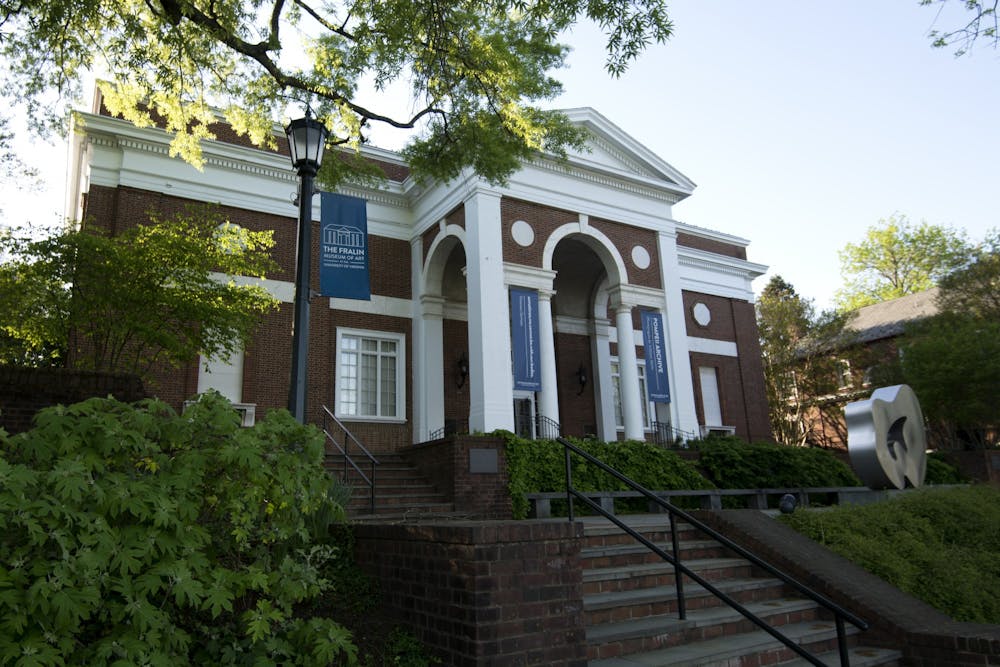U.Va. Arts launched the first of its monthly webinars, "Inside U.Va. Arts,” May 13 — set to offer a behind the scenes look at the arts at the University. Panel speakers Carmen Higginbotham, chair of the McIntire Department of Art and associate professor of Art; Jenny Wales, director of the Heritage Theatre Festival and associate professor of Drama; and Matthew McLendon, J. Sanford Miller family director at The Fralin Museum of Art joined Jody Kielbasa, the vice provost for the Arts and Director of the Virginia Film Festival, in an open dialogue about how they have sought out creative solutions and transformed their respective programs and departments in order to be accessible during quarantine.
One of the main challenges faced by the arts collectively is engagement. Whether it’s creating visual art, performing, taking an art history course or simply visiting a museum, art is a sensory experience that has always relied on and emphasized in-person interaction as the ultimate mode of engagement. Quarantine and social distancing have sparked a greater conversation regarding interaction with art and how the power of technology can be harnessed to create impactful viewing experiences.
In the realm of arts education, Higginbotham stressed the mission to “keep the study of art palpable.” She said that necessary adjustments will have to be made, including “rethinking pedagogy in the arts.”
Higginbotham foresees challenges in funding studio art and art history courses, facilitating studio art discourse and learning and maintaining class size and availability. Nonetheless, she expects positive changes in the way art is taught and greater incorporation of virtual reality in the classroom. Whether or not classes are online, Higginbotham encourages students to take art and art history courses and to “get involved” as art education is so applicable to a wide range of disciplines.
The Heritage Theatre has also had to think innovatively in light of the pandemic. Their 2020 Heritage Theatre Festival shows — consisting of “Guys and Dolls,” “Hold These Truths,” “Blithe Spirit” and “The Book Club Play” — have been postponed to next year. In the meantime, Wales said that while it is impossible to completely replicate productions online, the goal is to move certain elements. Her priority is creating work where there is a “sense of community” and an “understanding of a shared humanity.”
As the pandemic has and will continue to impact the theater’s ability to produce and generate revenue, Wales urged people to be “advocates for the arts” because “the arts are imperative to heal and unite our communities.”
The Fralin Museum may be temporarily closed, but staff have been working tirelessly to continue bringing art to the community. According to McLendon, the museum has always emphasized the in-person museum experience, but the pandemic has offered a number of opportunities — including the expedited expansion of their online presence with their new webpage, “Fralin at Home,” and a filmed tour of the Contemporary Aboriginal Australian Memorial Poles Exhibition. The transition online has allowed for greater accessibility for disabled visitors, but also raised questions regarding issues of equity which The Fralin Museum is interested in further exploring and resolving in the future.
“A key priority of the Fralin is the real desire to give a voice to historically marginalized communities,” McLendon said.
The museum has established that 50 percent of works featured will come from underrepresented groups. They believe to be the first museum to quantify this commitment. Overall, the main goal of the Fralin during this period, given the uncertainty, is “maintaining the integrity of the museum.”
McLendon expects The Fralin to move from a phase of growth to one of maintenance. As museums across the nation lose 33 million dollars a day, how can people support the museum and arts in general? According to McLendon, people should “advocate for the arts as small businesses.”
The pandemic has fundamentally altered and questioned the norms of artistic experience and interaction. It has spurred necessary and perhaps even overdue conversations regarding accessibility to the arts. Despite the challenges the arts will continue to face as a result of this crisis, innovation, adaptation and — most importantly — empathy remain core strengths of the arts, not only as a discipline, but as a community. It is with these elements that the arts community will be able to creatively transform itself and implement inventive and more accessible ways of sharing stories, creating visuals and amplifying unheard voices in a way that is compelling and inclusive.







